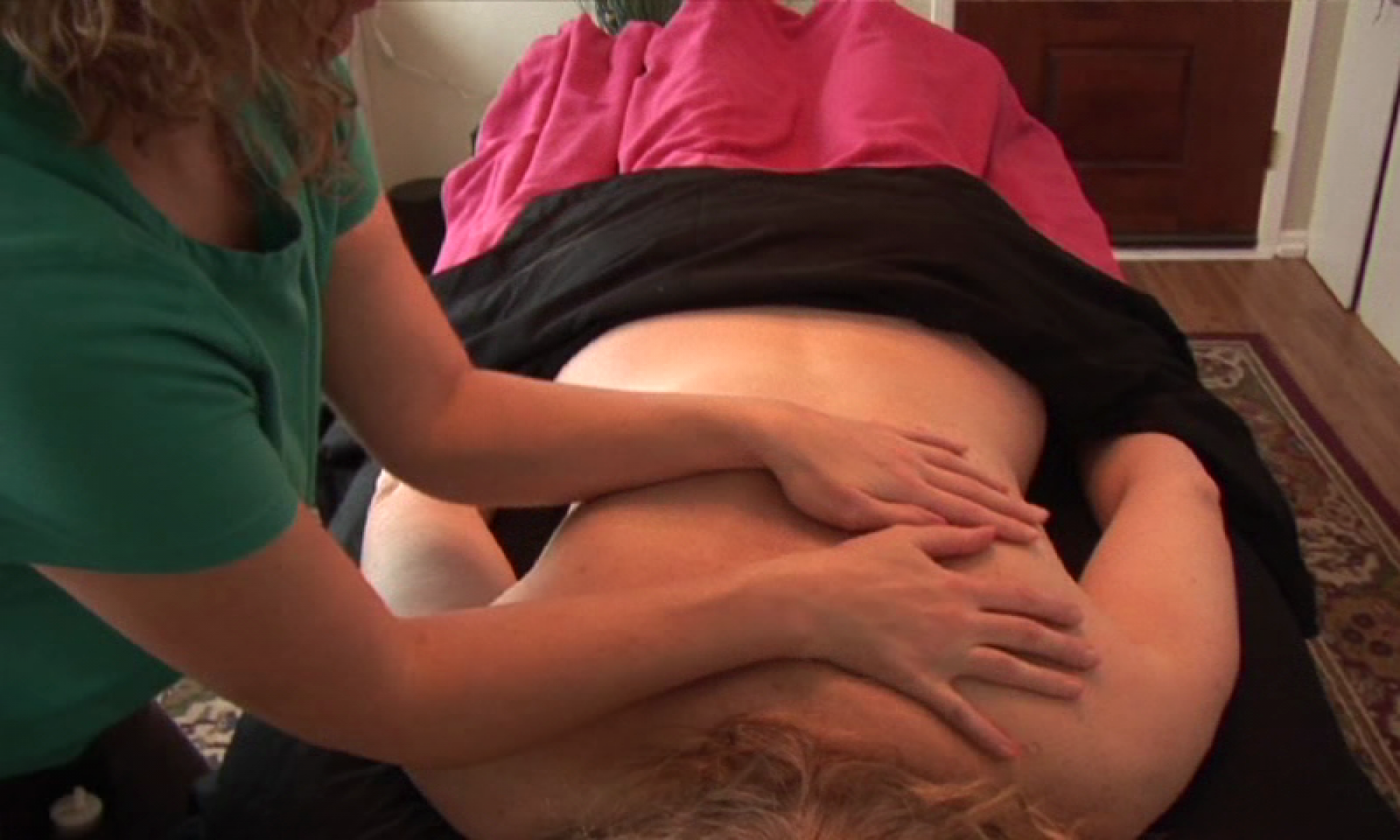A variety of different massage methods and techniques fall into this category. During a massage session, it is possible to have several theories/methods combined to meet the goals and needs of each client. A first time client may need to spend extra time initially, to complete an intake form detailing current and past health complaints and discuss this with the therapist. Once an agreed upon plan of action is developed with the client, the session may take on several forms. Therapeutic massage sessions may include lymphatic drainage, fascia work (connective tissue release), stretching, acupressure points, hot/cold therapy, trigger point work, use of an inversion table, balms/linaments/essential oils, or herbal compresses. Sessions may contain a relaxation element but also includes advanced techniques for pain and chronic health issues. Massage pressures can be light to deep depending upon client comfort and the area of the body being addressed.
Pregnancy massage is considered therapeutic massage. According to the American Pregnancy Association (APA), “Studies indicate that massage therapy performed during pregnancy can reduce anxiety, decrease symptoms of depression, relieve muscle aches and joint pains, and improve labor outcomes and newborn health.” Pregnancy massage aides relaxation of muscle tension and improving lymphatic and blood circulation through mild pressure. Swedish massage is the recommended prenatal massage method during pregnancy because it addresses many common discomforts associated with the skeletal and circulatory changes brought on by hormone shifts during pregnancy. Sciatica is often experienced in the later stages of pregnancy. Massage therapy addresses the inflammed nerves in the low back, gluteal area, and back of the legs. Pregnant clients are worked on in side-lying and on their backs for the safety of the baby and the mother. Hot, moist Thai herbal compresses are utilized to soften tight/tense areas.
Other potential benefits of prenatal massage:
- Reduced back pain
- Reduced joint pain
- Improved circulation
- Reduced edema
- Reduced muscle tension and headaches
- Reduced stress and anxiety
- Improved oxygenation of soft tissues and muscles
- Better sleep
As with any therapeutic approach to pregnancy wellness, women should discuss massage with their prenatal care provider. Women with the following conditions should speak with a health care provider prior to receiving a massage:
- High risk pregnancy
- Pregnancy Induced Hypertension
- Preeclampsia
- Previous pre-term labor
- Experiencing severe swelling, high blood pressure, or sudden, severe headaches
- Recently gave birth
Fascia work: The purpose of fascia work is to release tightness and tension in the muscles as well as in the connective tissue throughout the body, known as the fascia. This style of massage effects all the tissues beneath the surface of the skin and into the deep into the muscles and tissues. The purpose is to realign these deeper layers of connective tissue. By realigning the muscles and tissues, pain is relieved and the body is able to relax. Specific therapeutic fascia work can be done for temporomandibular joint (TMJ) syndrome, carpal tunnel syndrome, chronic cellulitis, lymphedema, tendonitis, joint issues like frozen shoulder, plantar fasciitis, surgical scar release, or low back/neck problems. Fascia work doesn’t always utilize massage lotions/oils and can be very deep (depending upon client comfort).

